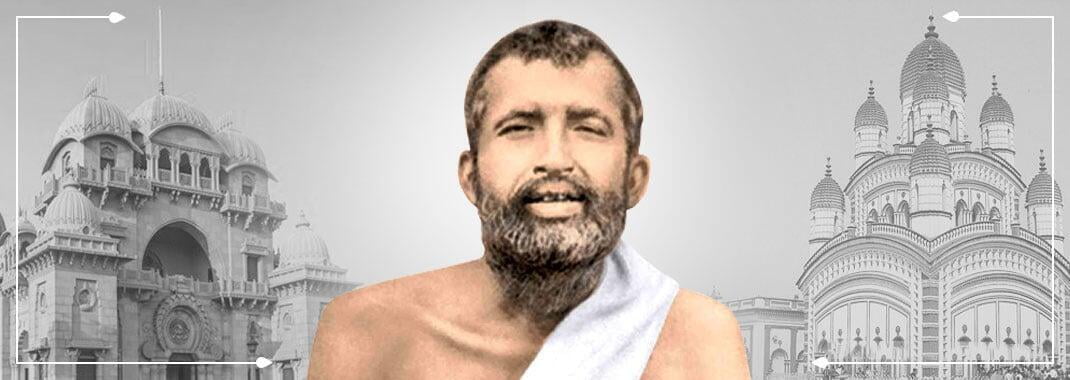SRI RAMAKRISHNA

SHORT BIOGRAPHY OF BHAGAWAN SRI RAMAKRISHNA
Birth
Sri Ramakrishna was born on 18 February 1836 in the village of Kamarpukur about sixty miles northwest of Kolkata. His parents, Kshudiram Chattopadhyaya and Chandramani Devi, were poor but very pious and virtuous. As a child, Ramakrishna (his childhood name was Gadadhar) was dearly loved by the villagers. From early days, he had strong disinclination towards formal education and worldly affairs. He was, however, a talented boy, and could sing and paint well. He was fond of serving holy men and listening to their discourses. He was oftentimes found to be absorbed in spiritual moods. At the age of six, he experienced the first ecstasy while watching a flight of white cranes moving against the background of black clouds. This tendency to enter into ecstasy intensified with age. His father’s death when he was seven years old served only to deepen his introspection and increase his detachment from the world.
Last Days
The intensity of his spiritual life and untiring spiritual ministration to the endless stream of seekers told on Sri Ramakrishna’s health. He developed cancer of the throat in 1885. He was shifted to a spacious suburban villa where his young disciples nursed him day and night. He instilled in them love for one another, and thus laid the foundation for the future monastic brotherhood known as Ramakrishna Math. In the small hours of 16 August 1886 Sri Ramakrishna gave up his physical body, uttering the name of the Divine Mother, and passed into Eternity.
MESSAGE OF SRI RAMAKRISHNA
CONTRIBUTIONS OF SRI RAMAKRISHNA TO WORLD CULTURE
SOME SAYINGS OF SRI RAMAKRISHNA
- He is born in vain who, having attained the human birth, so difficult to get, does not attempt to realize God in this very life.
- You see many stars in the sky at night, but not when the sun rises. Can you therefore say that there are no stars in the heavens during the day? O man, because you cannot find God in the days of your ignorance, say not that there is no God.
- One cannot have the vision of God as long as one has these three – shame, hatred, and fear.
- Be not a traitor in your thoughts. Be sincere; act according to your thoughts; and you shall surely succeed. Pray with a sincere and simple heart, and your prayers will be heard.
- Do not let worldly thoughts and anxieties disturb your mind. Do everything that is necessary in the proper time, and let your mind be always fixed on God.
- You should remember that the heart of the devotee is the abode of God. He dwells, no doubt, in all beings, but He especially manifests Himself in the heart of the devotee. The heart of the devotee is the drawing room of God.
- Pure knowledge and pure love are one and the same thing. Both lead the aspirants to the same goal. The path of love is much easier.
- Who is the best devotee of God? It is he who sees, after the realization of Brahman that God alone has become all living beings, the universe, and the twenty-four cosmic principles. One must discriminate at first, saying ‘Not this, not this’, and reach the roof. After that one realizes that the steps are made of the same materials as the roof, namely, brick, lime, and brick-dust. The devotee realizes that it is Brahman alone that has become all these — the living beings, the universe, and so on.
- Live in the world like a waterfowl. The water clings to the bird, but the bird shakes it off. Live in the world like a mudfish. The fish lives in the mud, but its skin is always bright and shiny.
- I tell you the truth: there is nothing wrong in your being in the world. But you must direct your mind toward God; otherwise you will not succeed. Do your duty with one hand and with the other hold to God. After the duty is over you will hold to God with both hands.
- The breeze of His grace is blowing day and night over your head. Unfurl the sails of your boat (mind), if you want to make rapid progress through the ocean of life.
- One should constantly repeat the name of God. The name of God is highly effective in the Kaliyuga. The practice of yoga is not possible in this age, for the life of a man depends on food. Clap your hands while repeating God’s name, and the birds of your sins will fly away.
RECOMMENDED FOR FURTHER READING
RECOMMENDED FOR FURTHER READING
- Mahendranath Gupta (M), The Gospel of Sri Ramakrishna, tr. Swami Nikhilananda, Two volumes. Chennai: Sri Ramakrishna Math | Buy
- Swami Saradananda, Sri Ramakrishna: The Great Master, tr. Swami Jagadananda, Two volumes. Chennai: Sri Ramakrishna Math | Buy
- Life of Sri Ramakrishna, Kolkata: Advaita Ashrama | Buy
- Christopher Isherwood, Ramakrishna and His disciples, Kolkata: Advaita Ashrama | Buy
- Romain Rolland, The Life of Ramakrishna, tr. E. K. Malcolm Smith. Kolkata: Advaita Ashrama | Buy

